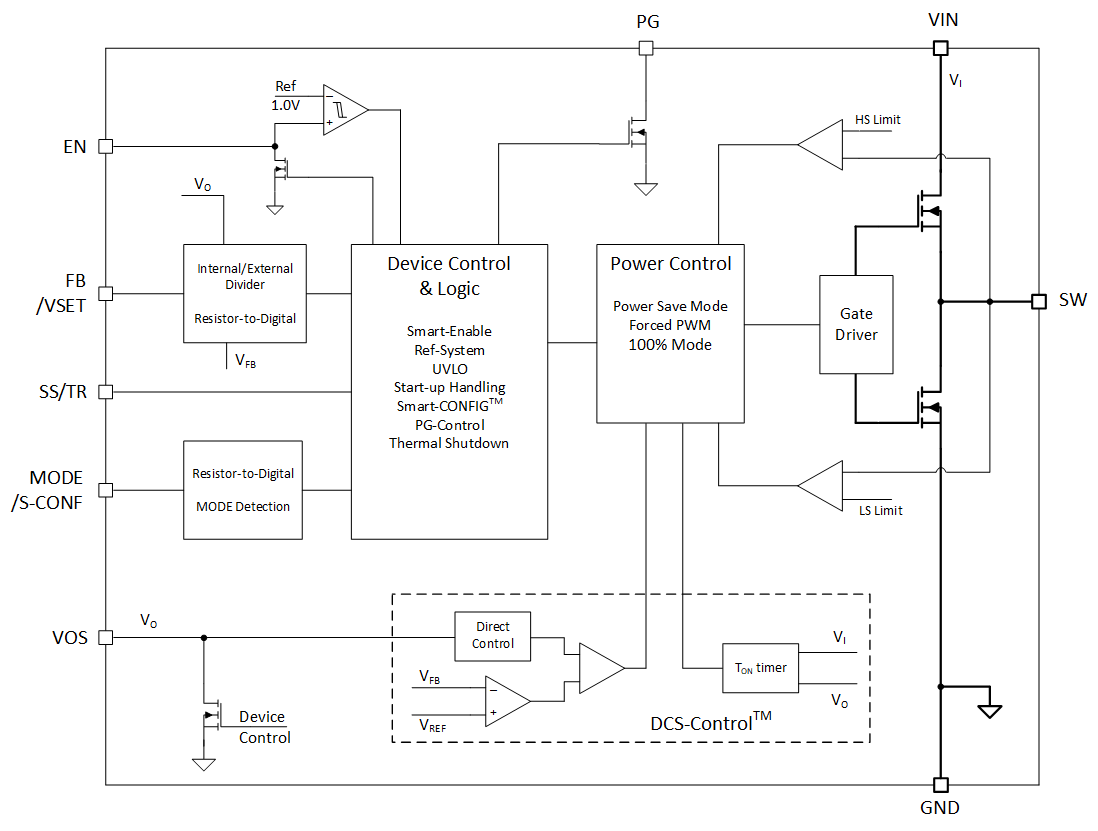SFFS465 May 2022 TPS62901-Q1 , TPS62902-Q1 , TPS62903-Q1
1 Overview
This document contains information for the TPS629xx-Q1 (VQFN package) to aid in a functional safety system design. Information provided are:
- Functional Safety Failure In Time (FIT) rates of the semiconductor component estimated by the application of industry reliability standards
- Pin failure mode analysis (Pin FMA)
Figure 1-1 shows the device functional block diagram for reference.
 Figure 1-1 Functional Block
Diagram
Figure 1-1 Functional Block
DiagramThe TPS629xx-Q1 was developed using a quality-managed development process, but was not developed in accordance with the IEC 61508 or ISO 26262 standards.